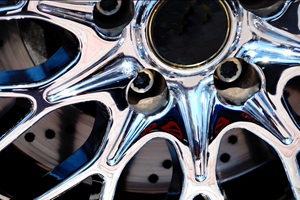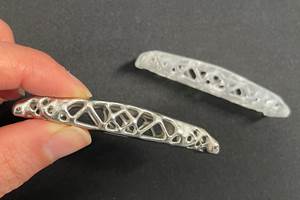Solution Heating and Cooling
Solution heating and cooling are essential parts of many finishing processes.
Solution heating and cooling are essential parts of many finishing processes. The temperature of solutions affects cleaning effectiveness, rates of electrodeposition, the ability to produce heavier anodic coatings on aluminum (hard anodizing) and many other finishing-related chemical processes. The most common equipment for controlling the temperatures of solutions include heat exchangers, immersion heaters and chillers.
Heat Exchangers
Heat exchangers may be used to heat or cool a solution. They operate by recirculating a liquid (or steam) that is either hotter or cooler than the process solution. In the simplest installations the liquid circulates through pipes, coils or plate-type units immersed in the process solution. As the steam or liquid circulates through the immersed pipes, plates or coils, heat is exchanged and the process solution becomes warmer or cooler.
Larger installations use external heat exchangers. They occupy little space in the process tank, since they recirculate the process solutions through the external heat exchanger, using a pump. The tubes in the external heat exchanger circulating the process solution are surrounded by a shell or plate-and-frame enclosure containing liquid that is either cooler or warmer than the process solution. This fluid is also recirculated, using a pump. Heat is transferred from the water or other liquid in the shell to the process solution in the tubes if the objective is to heat the process solution. Heat is transferred from the process solution to the surrounding coolant if the objective is to lower process-solution temperature.
For either type of exchanger—external or internal—materials of construction are important. Plating and anodizing solutions may be very corrosive. Depending on the chemical composition of the process solution, various metals and plastics may be appropriate, ranging from mild steel to titanium, graphite, tantalum and fluoropolymers.
Sizing of heat exchangers requires calculations based upon the specific heat of the solution, the rate of heat transfer of the metal or plastic used in construction, evaporative losses and so on. To make these calculations, refer to the 2006 PRODUCTS FINISHING DIRECTORY, “Evaluation and Selection of Heat Exchangers”.
Electric Immersion Heaters
Immersion heaters offer a simple solution to heating process solutions. They use electric resistance heaters sheathed in various metals and plastic-coated metals. They are common in both large and small finishing systems and are available in a variety of sizes, shapes and configurations. These units can be mounted anywhere in the tank—on sides, front or bottom—to minimize work-flow problems.
As is the case with heat exchangers, sizing of heaters is important, requiring watt densities to be calculated based on initial heat-up speed, evaporative losses and work loads in the tank.
Materials of construction are vital to a long-term economical operation. They range from carbon steel to Incoloy and titanium. Quartz heaters are also used. Fluoropolymer-sheathed metal heaters have excellent resistance to most electroplating solutions, and like Teflon-coated fry pans, offer excellent release properties and easy cleaning.
It is vital in the interest of safety and fire protection to use temperature controllers that minimize the effects of short circuits, loss of solution from a tank—particularly a plastic tank—and incorporate redundant safety controls.
Detailed information on heater construction, sizing and installation may be found in the 2006 PRODUCTS FINISHING DIRECTORY “How to Choose an Electric Immersion Heater”.
Chillers
Chillers absorb heat from process solutions such as anodizing or plating solutions, using heat exchangers circulating chilled water from a refrigerating condensing unit. For very large installations water from a cooling tower may be used. Water-cooled chillers require condensate water treatment to eliminate mineral buildup.
Related Content
A Chromium Plating Overview
An overview of decorative and hard chromium electroplating processes.
Read MorePossibilities From Electroplating 3D Printed Plastic Parts
Adding layers of nickel or copper to 3D printed polymer can impart desired properties such as electrical conductivity, EMI shielding, abrasion resistance and improved strength — approaching and even exceeding 3D printed metal, according to RePliForm.
Read MoreNanotechnology Start-up Develops Gold Plating Replacement
Ag-Nano System LLC introduces a new method of electroplating based on golden silver nanoparticles aimed at replacing gold plating used in electrical circuits.
Read MoreLiquid Chrome Vs. Chromic Acid Flake
Contemplating how to continue offering chromic acid services in an increasingly stringent regulatory world? Liquid chrome products may be the solution you’re looking for.
Read MoreRead Next
Delivering Increased Benefits to Greenhouse Films
Baystar's Borstar technology is helping customers deliver better, more reliable production methods to greenhouse agriculture.
Read MoreA ‘Clean’ Agenda Offers Unique Presentations in Chicago
The 2024 Parts Cleaning Conference, co-located with the International Manufacturing Technology Show, includes presentations by several speakers who are new to the conference and topics that have not been covered in past editions of this event.
Read MoreEpisode 45: An Interview with Chandler Mancuso, MacDermid Envio Solutions
Chandler Mancuso, technical director with MacDermid Envio discusses updating your wastewater treatment system and implementing materials recycling solutions to increase efficiencies, control costs and reduce environmental impact.
Read More





















